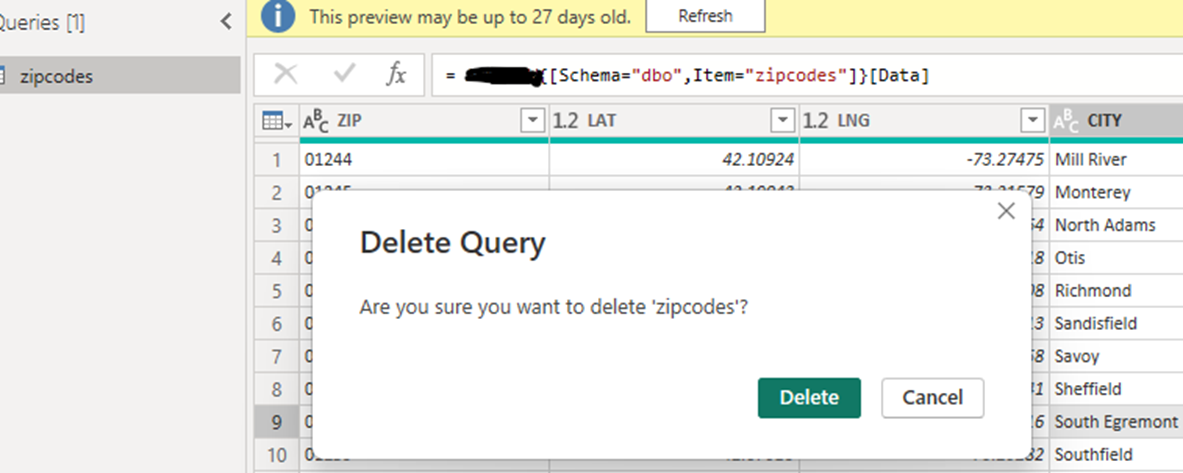One of my favorites in database development is "Analytical Functions" ( Oracle ) and "Window Functions" ( SQL Server / MariaDB).
I have written about these functions in the below mentioned posts.
https://zahirmohideen.blogspot.com/2009/09/sql-treasures.html
https://zahirmohideen.blogspot.com/2009/10/analytics-20.html
https://zahirmohideen.blogspot.com/2009/11/analytics-20-part-ii.html
https://zahirmohideen.blogspot.com/2012/09/difference-between-percentilecont-and.html
https://zahirmohideen.blogspot.com/2013/01/book-sql-server-window-functions.html
https://zahirmohideen.blogspot.com/2018/10/windowing-clause-why-it-matters.html
In MS SQL Server 2022 , now we have the option of "labelling" or "naming" the Window.
This improved readability , especially , when the same windowing clause is referenced in the query multiple times.
Here is the sample script to create a table and populate few records.
CREATE TABLE
emp
(
eid INT ,
lastname VARCHAR(50),
firstname VARCHAR(50),
department VARCHAR(50),
salary NUMERIC(18,2) ,
hiredate DATE
);
INSERT INTO
emp VALUES
(
101 ,
'Doe' ,
'Jane',
'Research',
10000 ,
'1971-08-16'
);
INSERT INTO
emp VALUES
(
102 ,
'Doe' ,
'John',
'HR',
7500 ,
'1975-03-09'
);
INSERT INTO
emp VALUES
(
103 ,
'Amin' ,
'Al',
'Research',
10300 ,
'1985-05-14'
);
INSERT INTO
emp VALUES
(
105 ,
'Kumar' ,
'Palani',
'Faculty Development',
9175 ,
'1985-05-14'
);
Here is the sample table "emp" with 4 records in it.
Here is the sample table "emp" with 4 records in it.
In the following example , I am naming each window clause a name and reusing that window wherever possible.
This simple enhancement leads to readability , easier to understand.
SELECT
e.* ,
MIN(e.salary) OVER win_dep AS Lowest_Salary_Department ,
MIN(e.salary) OVER win_all AS Lowest_Salary_OverAll,
MAX(e.salary) OVER win_dep AS Higher_Salary_Department ,
MAX(e.salary) OVER win_all AS Higher_Salary_OverAll,
first_value(e.hiredate)
OVER win_emp AS First_Hired_Date_Department
FROM
emp e
WINDOW
win_emp AS (PARTITION BY department ORDER BY hiredate ASC),
win_dep AS (PARTITION BY department ),
win_All AS ( PARTITION BY (1) );
This is equivalent to
SELECT
e.* ,
MIN(e.salary) OVER (
PARTITION BY
department ) AS Lowest_Salary_Department ,
MIN(e.salary) OVER (
PARTITION BY
(1) ) AS Lowest_Salary_OverAll,
MAX(e.salary) OVER (
PARTITION BY
department
ORDER BY
hiredate ASC) AS Higher_Salary_Department ,
MAX(e.salary) OVER (
PARTITION BY
(1) ) AS Higher_Salary_OverAll,
first_value(e.hiredate) OVER (
PARTITION BY
department
ORDER BY
hiredate ASC) AS First_Hired_Date_Department
FROM
emp e;
Updated on 04/18/2024
By looking at the 23c new features , learn that this feature is available in Oracle 23c as well.
Here is the script ( identical to SQL Server 2023) .
SQL> select banner from v$version ;
BANNER
--------------------------------------------------------------------------------
Oracle Database 23c Free, Release 23.0.0.0.0 - Developer-Release
SQL> desc emp;
Name Null? Type
----------------------------------------- -------- ----------------------------
EID NUMBER(38)
LASTNAME VARCHAR2(50)
FIRSTNAME VARCHAR2(50)
DEPARTMENT VARCHAR2(50)
SALARY NUMBER(18,2)
HIREDATE DATE
SQL> select * from emp;
EID LASTNAME FIRSTNAME DEPARTMENT SALARY HIREDATE
---------- --------------- --------------- -------------------- --------- ---------
101 Doe Jane Research 10000.00 16-AUG-71
102 Doe John HR 7500.00 03-SEP-75
103 Amin Al Research 10300.00 14-MAY-85
105 Kumar Palani Faculty Development 9175.00 14-MAY-85
SQL> SELECT
e.* ,
MIN(e.salary) OVER win_dep AS Lowest_Salary_Department ,
MIN(e.salary) OVER win_all AS Lowest_Salary_OverAll,
MAX(e.salary) OVER win_dep AS Higher_Salary_Department ,
MAX(e.salary) OVER win_all AS Higher_Salary_OverAll,
first_value(e.hiredate)
OVER win_emp AS First_Hired_Date_Department
FROM
emp e
WINDOW
win_emp AS (PARTITION BY department ORDER BY hiredate ASC),
win_dep AS (PARTITION BY department ),
win_All AS ( PARTITION BY (1) );
EID LASTNAME FIRSTNAME DEPARTMENT SALARY HIREDATE LOWEST_SALARY_DEPARTMENT LOWEST_SALARY_OVERALL HIGHER_SALARY_DEPARTMENT HIGHER_SALARY_OVERALL FIRST_HIR
---------- --------------- --------------- -------------------- --------- --------- ------------------------ --------------------- ------------------------ --------------------- ---------
105 Kumar Palani Faculty Development 9175.00 14-MAY-85 9175 7500 9175 10300 14-MAY-85
102 Doe John HR 7500.00 03-SEP-75 7500 7500 7500 10300 03-SEP-75
101 Doe Jane Research 10000.00 16-AUG-71 10000 7500 10300 10300 16-AUG-71
103 Amin Al Research 10300.00 14-MAY-85 10000 7500 10300 10300 16-AUG-71
Comments Welcome!














